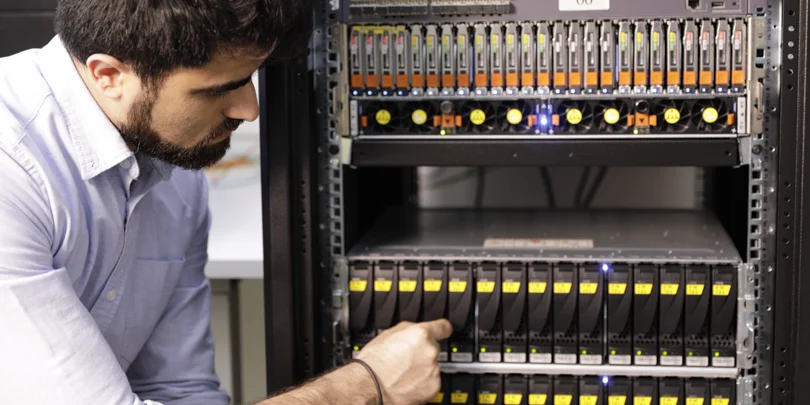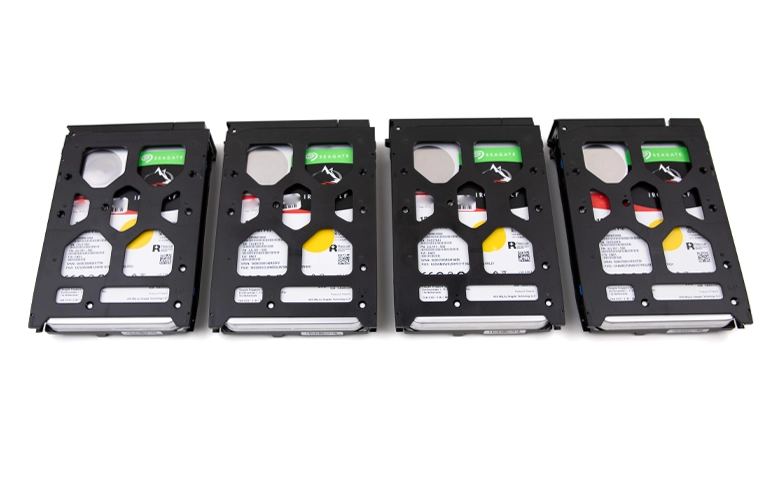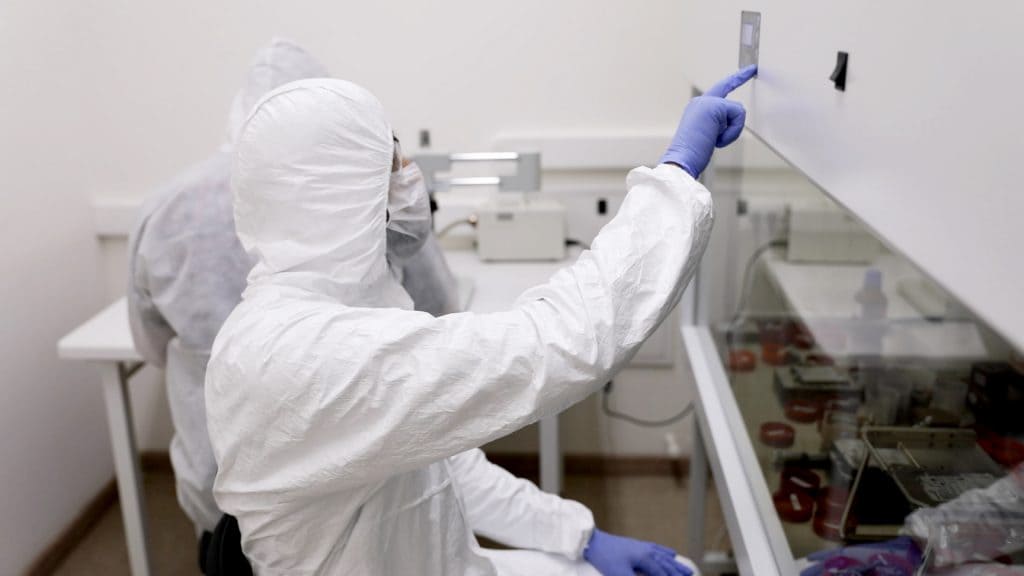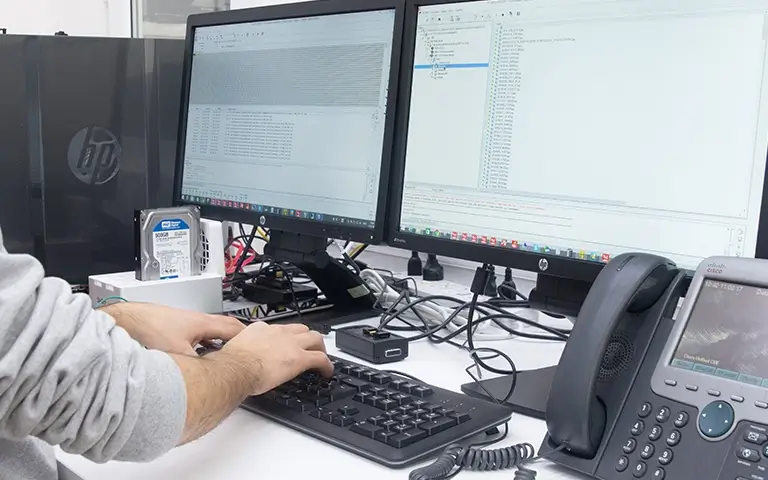A renowned college in Massachusetts faced a severe ransomware attack that brought its entire IT infrastructure to a standstill. The cybercriminals managed to encrypt every critical system, including multiple Virtual Machines (VMs) hosted on VMware ESXi servers.
Within hours, the institution’s network, academic records, and administrative data became completely inaccessible.
The incident disrupted the college’s daily operations and posed a serious threat to years of stored information. Their IT department quickly realized that traditional recovery methods would not be enough.
The encryption had spread across several layers of the storage system, making it a highly complex case that required professional expertise.
To restore their data securely and maintain its original structure, the college turned to RAID Recovery Services, a trusted partner known for handling large-scale ransomware recovery and RAID reconstruction cases.

The Ransomware Breach and Its Impact
The ransomware attack went beyond encrypting VMware ESXi data and struck the college’s entire backup system. The hackers accessed the management interface of a Quantum SuperLoader 3, emptied the tape backup libraries, and erased 32 tape catalogs. This action destroyed the primary data backups the IT team relied on.
They also reset two QNAP NAS devices used as secondary storage, removing all redundant copies and virtual machine snapshots. With both primary and backup data compromised, the institution faced a complete data outage.
This incident shows how modern ransomware attacks often target backup infrastructure first to make recovery harder. Learn more about common risks to tape backup systems and see a similar QNAP NAS recovery case.
Initial Evaluation and Technical Findings
When the college’s IT department brought the affected storage devices to our lab, we began a detailed assessment to understand the scope of damage and recovery complexity. Key findings included:
RAID Configuration: The system consisted of multiple drives set up in a RAID 6 volume with a total capacity of 42TB.
Recovery Goal: Our main objective was to restore the data while maintaining the original folder structure, file names, and timestamps.
Drive Condition: All drives were in good physical condition with no signs of head or motor failure.
Technical Complexity: The IT team had used Microsoft Deduplication on an iSCSI volume managed by Synology devices, creating multiple layers of data mapping to address during recovery.
Data Integrity Priority: Protecting the source data was critical, so all recovery steps were planned around non-invasive methods.
For more insights into how redundancy works in similar setups, explore our guide on RAID 6 configuration.

Challenges in Multi-Layered Data Recovery
This recovery required navigating through several intertwined technologies that added layers of complexity. Our engineers faced the following main challenges:
Virtualization Layer: The encrypted VMware ESXi environment required careful handling to extract virtual disk images without altering the corrupted metadata.
Deduplication System: The Microsoft Deduplication feature compressed and distributed data blocks, which demanded a custom reconstruction process before file restoration.
Synology iSCSI Management: The deduplication was applied over Synology-managed iSCSI volumes, requiring our team to decode proprietary structures.
Storage Redundancy: Although the RAID 6 array offered fault tolerance, rebuilding it accurately was critical to prevent logical inconsistencies.
Such complex environments often present similar obstacles when multiple storage systems interact.
Learn more about related issues in Synology NAS recovery challenges and VMware recovery issues.
Our Recovery Process
After completing diagnostics, our engineers created a structured recovery plan to ensure safe data restoration. The process included several precise steps:
Each 8TB helium drive was cloned using high-speed imaging tools to avoid working on original media. This ensured full data protection in case of unexpected interruptions.
During imaging, we used a nitrogen-based cooling system to maintain stable drive temperatures and prevent overheating throughout the long cloning process.
Once all drives were cloned, the RAID 6 array was carefully rebuilt to restore data flow and access patterns.
Our engineers reversed Microsoft Deduplication to restore each file to its original state before reassembling the iSCSI structure.
Finally, the reconstructed data was verified, and the iSCSI volume was mounted for full integrity checks.
These steps combined imaging precision with logical reconstruction expertise, similar to techniques described in our RAID controller recovery process.

Fast turnaround times for business-critical data
Results and Data Verification
Once the recovery process was complete, we successfully restored the entire 42TB RAID 6 volume. All recovered data retained its original folder hierarchy, file names, and timestamps, allowing the college to reintegrate its data seamlessly into production systems.
Our verification process included multiple validation stages to ensure data integrity and confirm that virtual machines and file systems were fully functional. The recovered VMware images were mounted, tested, and confirmed to operate as before the attack.
By recovering the data without altering the original media, we ensured that the college could resume academic and administrative operations quickly and safely.

Conclusion and Lessons Learned
This case highlights how advanced ransomware attacks can compromise even well-structured backup systems. By targeting both primary data and redundant storage, attackers make recovery far more difficult without expert help.
The Massachusetts college’s experience shows the importance of isolated backups, secure access controls, and routine integrity checks to prevent similar incidents.
At RAID Recovery Services, we specialize in complex recoveries involving ransomware, RAID arrays, and virtualized environments. Our expertise ensures that organizations regain access to critical information while maintaining complete data integrity.
If your business has been impacted by ransomware or corrupted backups, contact our team for professional ransomware recovery services and secure data restoration solutions.
Trust the experts with proven results
Frequently Asked Questions
How can ransomware affect RAID storage systems?
Ransomware can encrypt data across all drives in a RAID array, including virtual environments and backups. Once encrypted, it prevents users from accessing files or rebuilding the array without specialized decryption and recovery methods.
Why did the attackers target the college’s backup systems?
Modern ransomware attacks often focus on destroying backups first to make recovery impossible without paying a ransom. By erasing tape catalogs and resetting NAS devices, hackers eliminate redundancy and force institutions into a critical data loss situation.
Can data be recovered after ransomware encrypts virtual machines?
Yes. In many cases, data can be recovered by reconstructing the RAID structure, extracting virtual disk images, and restoring file systems. Our team specializes in such ransomware data recovery operations involving VMware and iSCSI setups.
How did RAID Recovery Services recover 42TB of encrypted data?
We cloned every drive, reconstructed the RAID 6 array, reversed deduplication layers, and rebuilt the iSCSI volume. This structured process allowed full data restoration with preserved file names and hierarchy.
How can organizations protect themselves from similar ransomware attacks?
Regularly test backup systems, store offsite copies, limit remote access to management interfaces, and use network segmentation. Most importantly, ensure that recovery plans include professional assistance from experts like RAID Recovery Services.